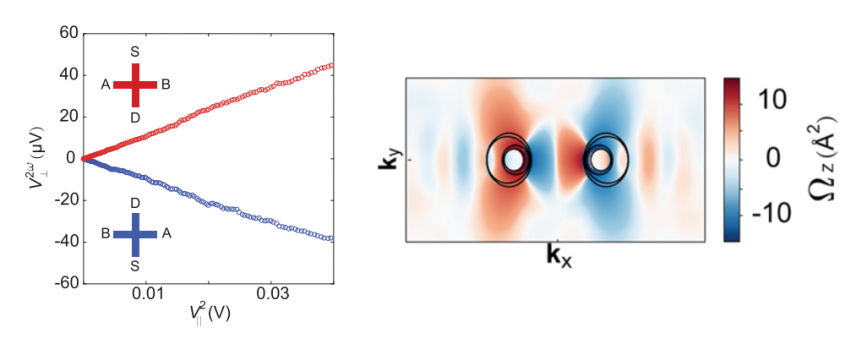Transition metal ditellurides (TMDT) exhibit various physical phenomena originating from the strong spin-orbit coupling. In particular, it is known that Td phase bilayer WTe2 exhibits the non-linear Hall effect (NLH), which can occur in a time-reversal symmetric condition. However, due to a small difference in the electronegativities of tungsten/molybdenum and tellurium, it is difficult to synthesize uniform and clean few-layer WTe2 or MoTe2 single crystals via a common chemical vapor deposition (CVD) method.
Kian Ping Loh’s group at the National University of Singapore (NUS) successfully synthesized, for the first-time high-quality, centimeter-scale MoTe2 bilayer and trilayer films through the two-stage CVD method. Precise control of thickness enabled the team to investigate thickness-dependent symmetry-related effects. They showed that the out-of-plane ferroelectricity appears only for the bilayer crystal due to the broken centrosymmetry. NLH occurs for both bilayer and trilayer MoTe2 crystals at low-temperature where they exist as non-centrosymmetric Td phase. A theoretical study performed by Alessandro Stroppa of CNR-SPIN and Kunihiro Yananose and Jaejun Yu of the Seoul National University (SNU) calculated the Berry curvature dipoles of these phases using density functional theory calculations, thus providing a theoretical framework for the experimentally confirmed NLH.
Transport studies showed that the bilayer and trilayer belong to different conductivity regimes. Notably, the output non-linear Hall voltage of the bilayer MoTe2 is among the highest reported values. For the trilayer, it was verified that the intrinsic contribution to the NLH by the Berry curvature dipole is significant in the low conductivity condition. The present study will pave the way for the application of non-linear electrical devices using wafer-scale, atomically-thin MoTe2 single crystals.
Authors: Teng Ma#, Hao Chen#, Kunihiro Yananose#, Xin Zhou, Lin Wang, Runlai Li, Ziyu Zhu, Zhenyue Wu, Qing-Hua Xu, Jaejun Yu, Cheng Wei Qiu, Alessandro Stroppa*, and Kian Ping Loh* (#equally contributed, *corresponding author)
Nature Communications volume 13, Article number: 5465 (2022)
Published: 17 September 2022
DOI: https://doi.org/10.1038/s41467-022-33201-3


